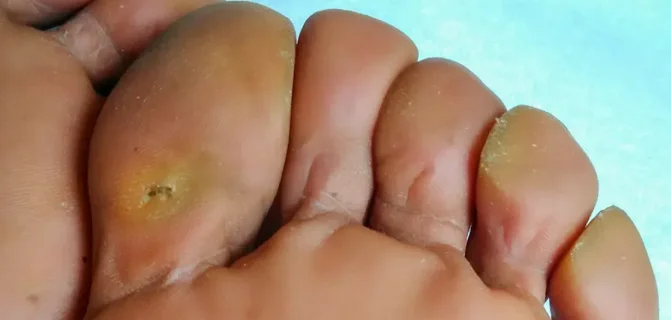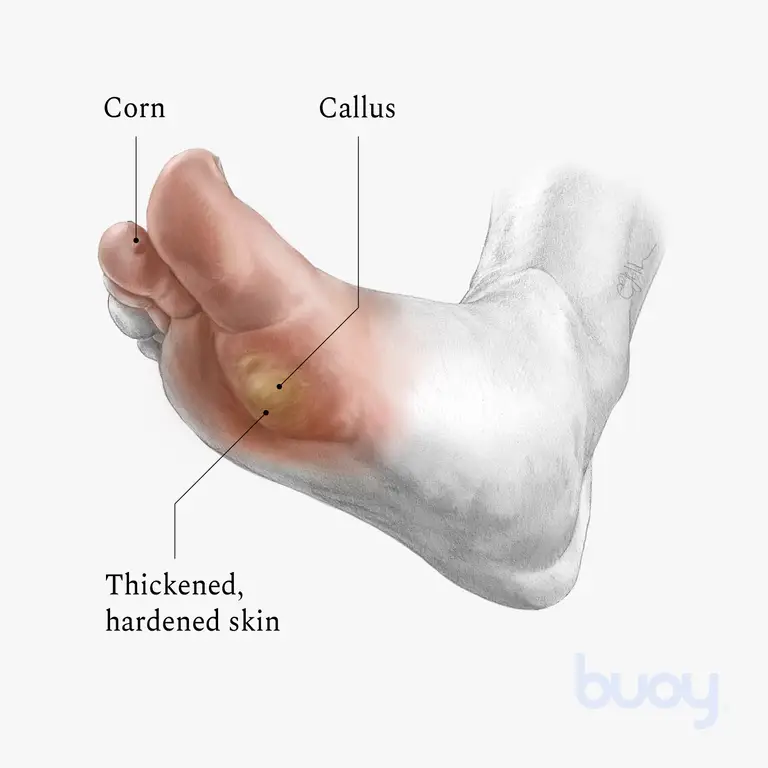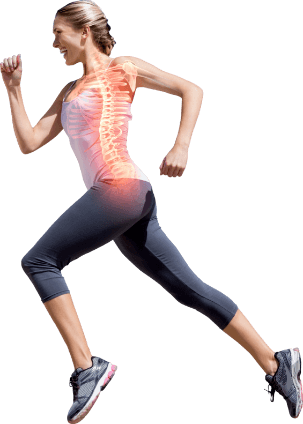Corns and Calluses

Foot corns and calluses are thick, hardened areas of skin that develop on the feet due to repeated pressure or friction. While they are generally not harmful, they can be unsightly and cause discomfort or pain. Here are some treatment options to help alleviate foot corns and calluses:
What does a foot corn look like?
A foot corn is a hardened piece of skin that looks almost like a blister. They are different to a callus. Corn is usually very local to the area.
A corn is usually deeper and as a podiatrist would like to say; needs to be scooped out from deep within.
A callus on the other hand is more surface-level and can be shaved off like grating cheese!

Causes of Foot Corns and Calluses
Corns and calluses can be caused by a variety of factors, including:
- Ill-fitting shoes: Shoes that are too tight, too loose, or have high heels can cause friction and pressure on the feet.
- Walking or standing for long periods of time: This can lead to increased pressure on the feet and the development of corns and calluses.
- Certain foot deformities: Conditions such as bunions or hammertoes can cause uneven pressure on the feet, leading to the development of corns and calluses.
- Abnormal gait or foot mechanics: Issues with the way you walk or the mechanics of your feet can lead to increased pressure on certain areas, resulting in corns and calluses.
Preventing Corns and Calluses
Prevention is key when it comes to foot corns and calluses. Here are some tips to help prevent them from developing:
- Wear properly fitting shoes with good arch support.
- Use cushioned insoles or orthotics to help distribute pressure evenly across the foot.
- Avoid wearing high heels or shoes with pointed toes for long periods of time.
- Keep your feet clean and dry, and use moisturizer regularly to prevent dry skin.
- Wear socks made of breathable materials to prevent excess moisture from building up.
Can Corns Become Serious?
While corns and calluses are generally harmless, they can lead to complications in some cases. These can include:
- Infection: If a corn or callus is left untreated or if it becomes inflamed, it can become infected.
- Ulceration: In some cases, a corn or callus can become so thick that it breaks down the skin underneath, leading to an open sore or ulcer.
- Diabetic foot complications: People with diabetes are at a higher risk of developing foot complications, including infections and ulcers, due to poor circulation and nerve damage.
Corns and Calluses Treatment
- Wear comfortable, properly fitting shoes with good arch support to prevent additional friction.
- Soak your feet in warm, soapy water to soften the skin before gently using a pumice stone to file away the excess skin.
- Apply a moisturising lotion or cream to keep the area soft and hydrated.
- Pads or cushions to alleviate pressure on the affected area.
- See a podiatrist who may recommend custom orthotics or prescribe medication to reduce pain and inflammation.
- It's important to note that removing foot corns and calluses at home can be risky, particularly if you have diabetes or poor circulation. If you are experiencing pain or discomfort, it's best to seek professional medical advice.








